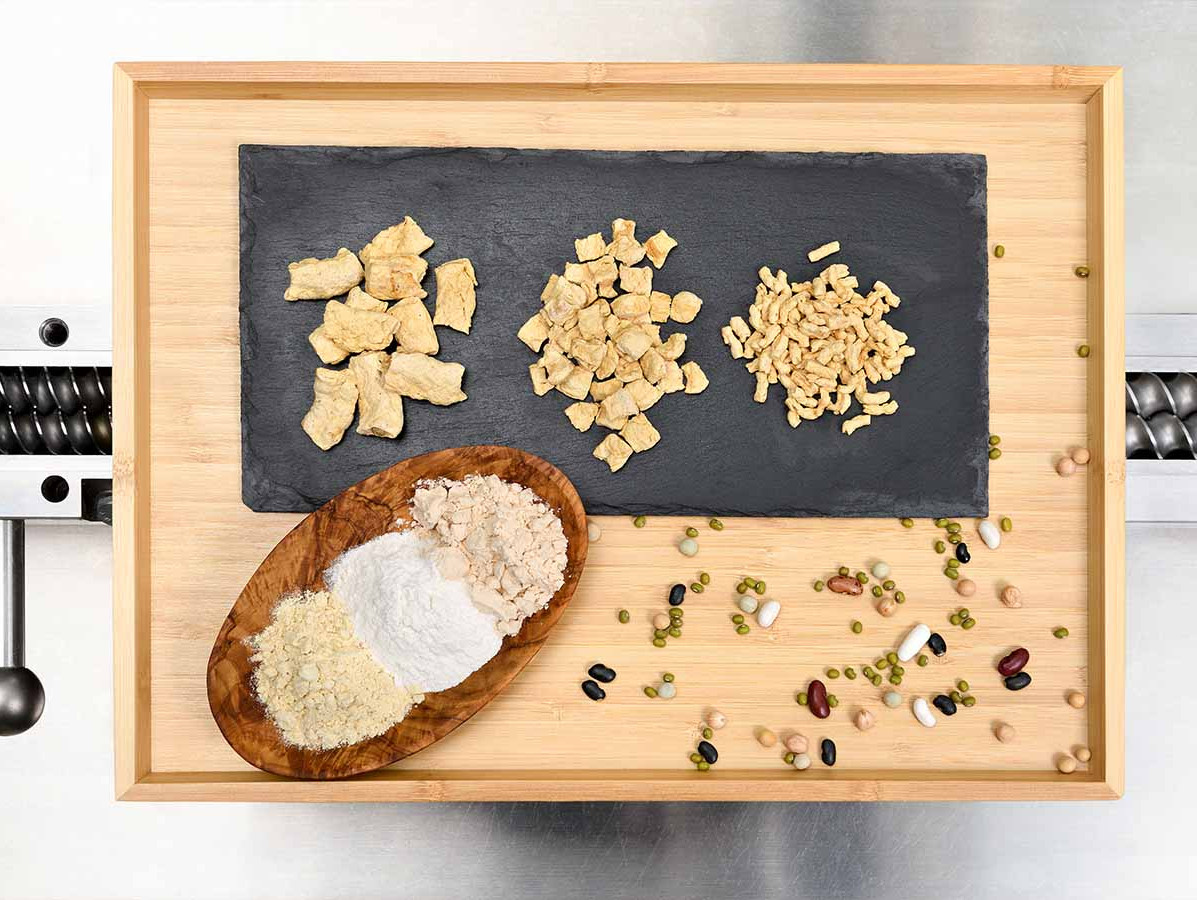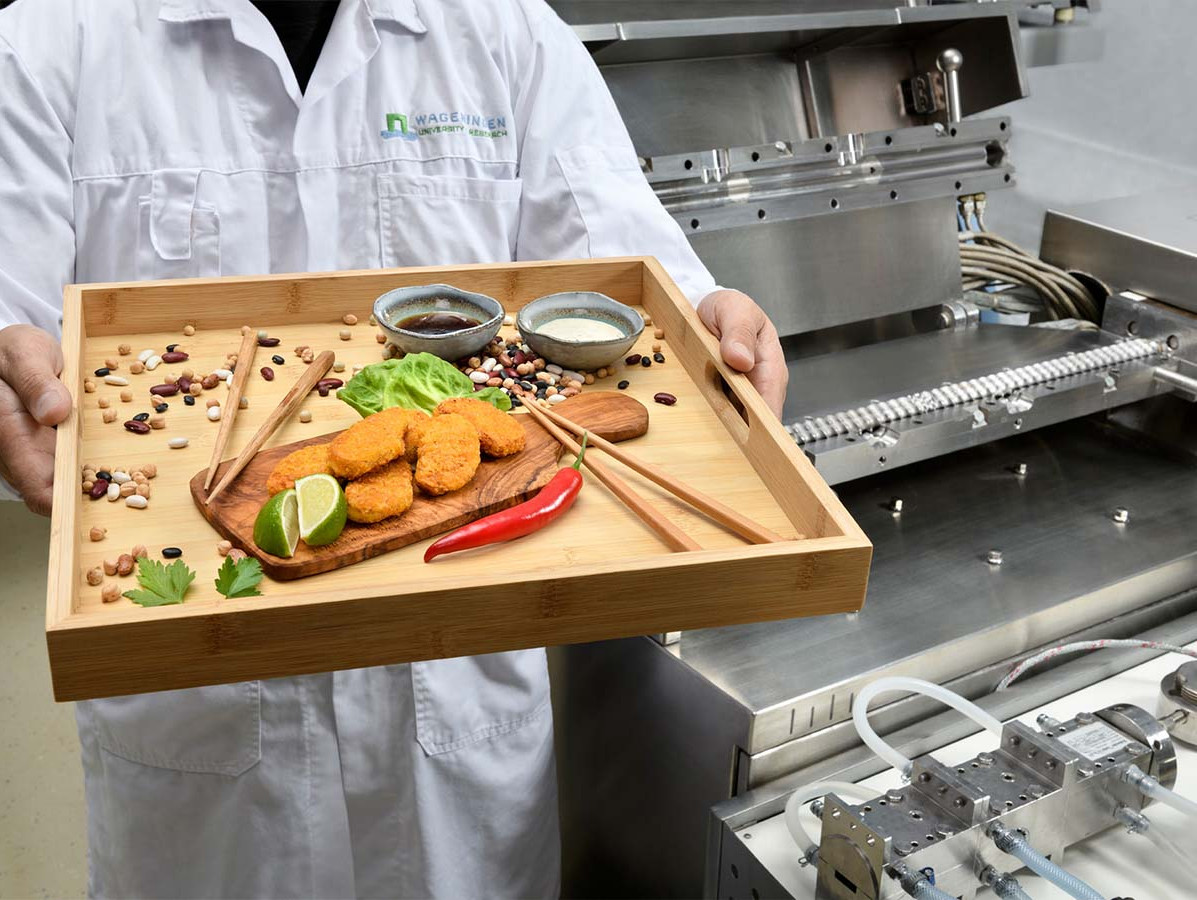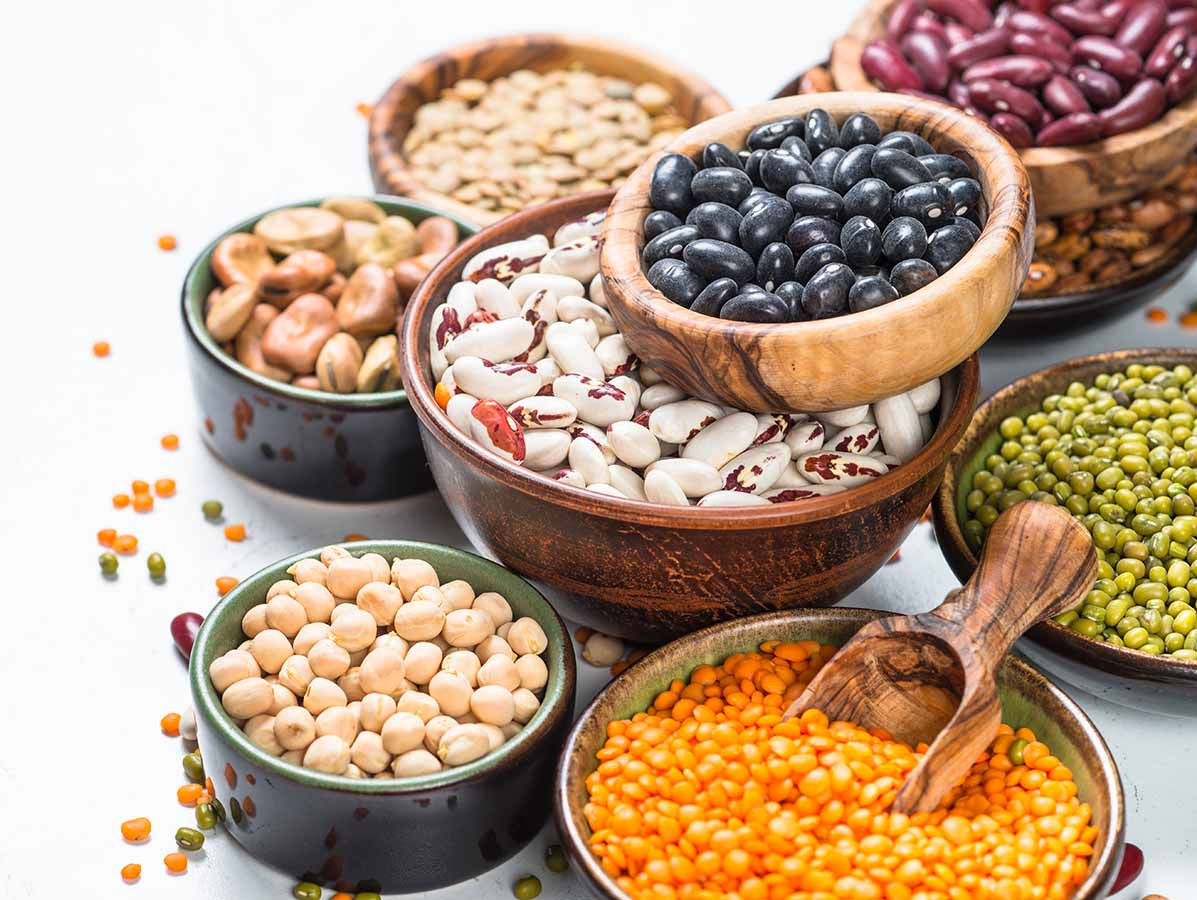
Texturized vegetable protein (TVP) can mimic the fibrous structure of animal muscle meat. Many meat substitutes use this pre-structured form of plant protein. Although TVPs are already widely used in products like burgers, sausages, and meatballs, there are still many research questions and challenges.
We already know quite a lot about the ingredient properties, process parameters, and characteristics of TVPs. However, the links between these properties and parameters are less understood. It remains challenging for product developers to find a suitable TVP for their specific application. To make better and more targeted choices, it's crucial to understand how certain structural features of TVPs contribute to the functional properties of the meat substitutes they are used in. Wageningen University & Research is actively investigating this.
The production, development, and consumption of TVPs have surged due to the rise of meat substitutes. This demand is driven by increasing concern for animal welfare and the growing awareness that consuming animal proteins has a significant impact on greenhouse gas emissions and, consequently, on climate change. Common plant-based products like tofu (made from soy) and seitan (from wheat gluten) are often not well-suited as meat substitutes for most Western consumers—they lack the fibrous structure that mimics animal meat. This is where TVPs come into play. TVPs are protein-rich ingredients (45–70% protein) with a preformed structure obtained through dry extrusion. They come in various sizes and shapes, from fibers and chunks to granules and slices. The dry nature of TVPs makes them a valuable plant-based protein for countries like those in Africa, where it can be used as a meat substitute in various dishes, such as stews. One Acre Fund (OAF) consumer studies in Rwanda showed that TVPs are highly appreciated as meal components. Future aspirations include enabling local farmers to process their own crops into TVPs. Wageningen Food & Biobased Research is exploring this possibility in collaboration with OAF.

Most TVPs are made from proteins derived from soy, wheat, peas, and/or faba beans. These crops are relatively accessible and affordable. Additionally, they have the necessary technical functionalities as well as the desired taste and aroma to be processed into TVP. The protein network and its strength are crucial for the TVP structure. The typical protein concentrations needed to form the structure vary for soy, wheat, and peas/faba beans, partly due to the specific properties of the proteins in these crops. Soy can be processed with about 50% protein, wheat requires around 68%, and the combination of peas and faba beans about 70% (Hong et al., 2022). To achieve these protein levels, protein concentrate powders (with more than 60% protein) and protein isolates (with more than 80% protein) are used. For soy, defatted flour is sometimes used, as it already contains a fair amount of protein and soy can maintain a good structure at relatively low concentrations. When concentrates and flours are used, the TVP also contains starch and/or fibers. Starch (from wheat, corn, or tapioca) is sometimes added to stiffen the structure. Added fibers (such as oat or pea fibers) also help to create the desired structure. Water is another essential ingredient, used to hydrate the proteins and other powders (at least partially) during TVP production.
Emerging ingredients include proteins from other grains (oats, barley, and rice), legumes (chickpeas, lentils, mung beans), and seeds (pumpkin and sunflower). These ingredients still face challenges related to taste, smell, color, and technical properties. In a project with One Acre Fund, Wageningen Food & Biobased Research is investigating which local crops in countries like Rwanda are suitable or can be made suitable for TVP production.
TVPs are produced using an extruder. Single-screw extruders were mainly used in the past, but nowadays twin-screw extruders are preferred for their versatility and flexibility. Sometimes, protein powder is mixed with steam and/or water in a pre-conditioner to hydrate and preheat the powder, thereby saving residence time. The protein powder is fed into the extruder via a feeder, and water is added in the extrusion barrel shortly afterward. To melt and shape the protein mixture, the processing temperature ranges from 120 to 160°C. The mixture exits the extruder barrel through a die, which determines the final shape of the product—chunks, slices, or granules. Upon exiting the die, the mixture expands due to the heat (>100°C). The formed pieces are often further reduced in size using a cutter and then dried in an oven to achieve less than 12% moisture, allowing for long-term storage at room temperature.
None of the ingredients should contain much oil or fat. Free oil in the extrusion barrel can cause "slip," preventing sufficient shearing and friction and subsequently, leading to unstable processing, oil leakage and diminished product quality.
Products made with certain protein isolate or concentrate powders often have an unpleasant taste or smell. Some are bitter or give an astringent mouthfeel. Heating protein powders during the extrusion process can intensify these undesirable characteristics or even cause them. By varying screw design, temperature, flow rate, and moisture during extrusion, product properties like firmness, color, and flavor can be adjusted. Ingredient pre-treatment can also be considered to fine-tune the ingredients' functionality. Wageningen is conducting research in this area with industrial partners through a new Public-Private Partnership (PPP).

Depending on the ingredients and production process design, TVPs have specific structural characteristics like length, diameter, and density. A recent study (Van Esbroeck et al., 2024) also identified density, porosity, pore size, lamella thickness, and lamella density as structural features of TVPs. The technical functionality of TVPs, such as water and oil absorption capacity, water loss after compression, and hardness after water absorption, was also described in this study. Van Esbroeck et al. further investigated the effect of structural properties (density, porosity, pore size, lamella thickness, and lamella density) on TVP functionality. They found a wide variation in structural properties, with TVPs with thin walls and high porosity showing higher water absorption capacity.
The structural properties and technical functionality influence the final application of TVPs in meat substitutes. For instance, the firmness of raw meat substitutes is determined by different TVP structural properties than the firmness of cooked variants. Meat substitutes made with TVPs that have thicker walls are firmer before cooking, while TVPs with smaller pore sizes provide more firmness after cooking (Van Esbroeck et al., 2024). However, properties like moisture loss during cooking and compression were not linked to their structural characteristics. More research is needed to understand the relationship between TVP properties and their functionality in meat substitutes. It is believed that water and oil absorption capacity and water loss upon compression affect the juiciness of meat substitutes, while hardness after water absorption relates to the toughness of the meat alternative. Various studies (Maningat et al., 2022; Flory et al., 2023; Van Esbroeck et al., 2024) indicate that these relationships exist, though they are not yet fully defined.
There is a clear need to understand how these TVP properties can be achieved. The relationships between ingredients, the production process, and TVP properties need to be defined. Wageningen Food & Biobased Research aims to collaborate with industrial partners to generate more insight into these relationships through a new research project (TKI call 2024).
Caption mean photo: From protein-rich legumes (bottom right), protein powders (bottom left) are extracted, which are then processed into TVPs of various shapes and sizes (top center) through extrusion.
Sources:
• Hong, S., Shen, Y., & Li, Y. (2022). Physicochemical and Functional Properties of Texturized Vegetable Proteins and Cooked Patty Textures: Comprehensive Characterization and Correlation Analysis. Foods, 11(17).
• Van Esbroeck, T., Sala, G., Stieger, M., Scholten, E. (2024) Effect of structural characteristics on functional properties of textured vegetable proteins, Food Hydrocolloids, 149, 109529.
• Maningat, C.C., Jeradechachai, T., Buttshaw, M.R. (2022) Textured wheat and pea proteins for meat alternative applications, Cereal Chemistry, 99 (1), 37-66.
• Flory, J., Xiao, R., Li, Y., Dogan, H., Talavera, M.J., Alavi, S. (2023) Understanding Protein Functionality and Its Impact on Quality of Plant-Based Meat Analogues, Foods 12(17), 3232,.
• WUR and OAF (Wageningen University & Research and One Acre Fund) Alternative protein products from local crops in Rwanda (phase 1) - WUR.
Source: Vakblad Voedingsindustrie 2024